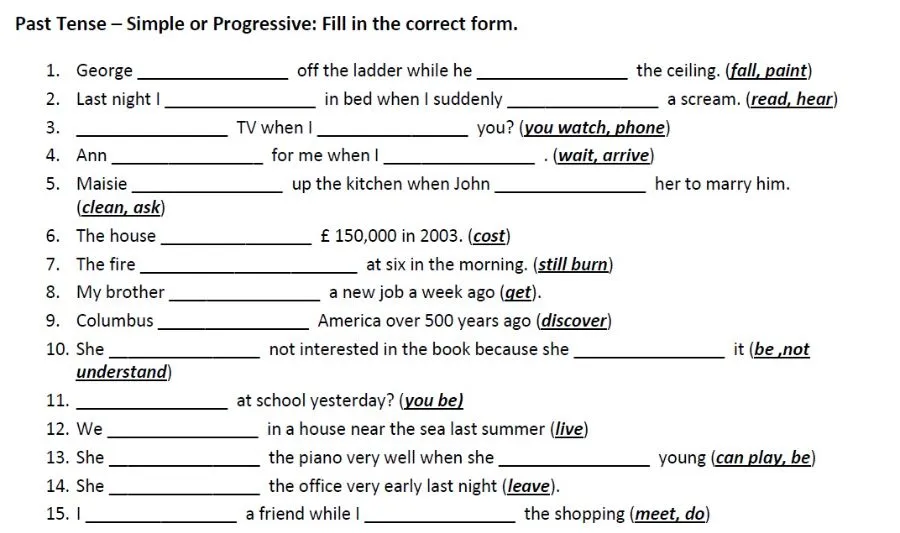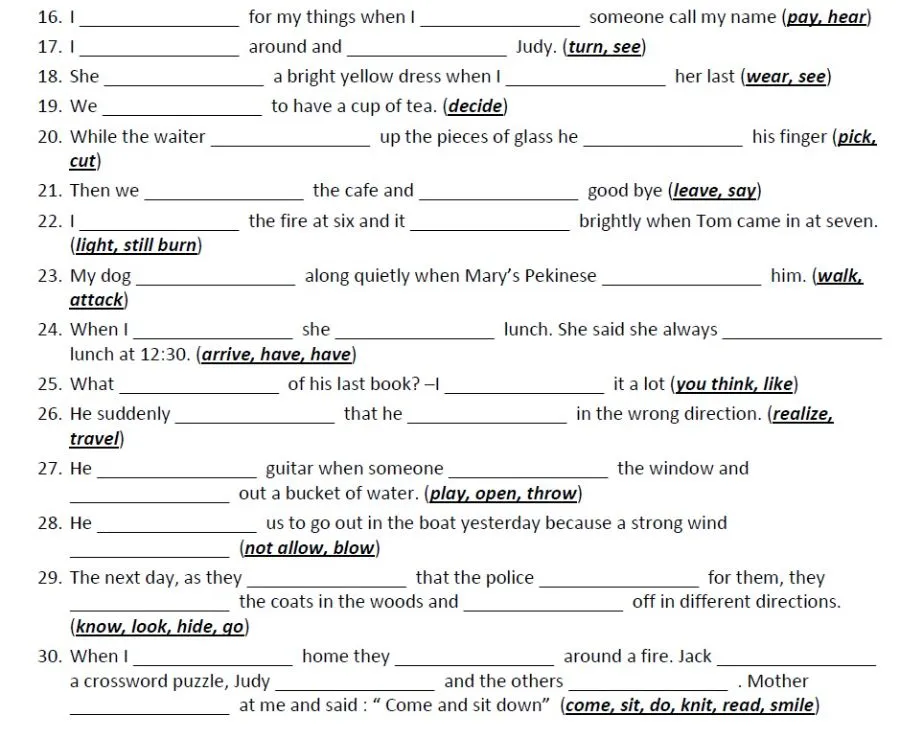My Content
Account
Catalog
System
App & Social
Our Projects
×
![]()

Past Continuous Tense Exercises
Let's complete these sentences using the Past Continuous tense following the pattern shown at the top of the image (S + was/were + V-ing).
Key Points to Remember:
- Use 'was' for singular subjects (I, he, she, it)
- Use 'were' for plural subjects (we, you, they)
- For negative sentences, add 'not' after was/were
- For questions, start with Was/Were
- The -ing form is used for all verbs
- This tense is used for actions that were in progress at a specific time in the past

Past Tense - Simple or Progressive Exercise
Let's solve this exercise step by step, filling in the correct past tense forms (simple or progressive).
📝 Explanation of rules used:
- Use Past Progressive (was/were + -ing) for actions in progress at a specific time in the past
- Use Past Simple for completed actions in the past
- When two actions occurred in the past, use Past Progressive for the longer action and Past Simple for the shorter/interrupting action
- For state verbs (be, cost, understand), use Past Simple
- Modal verbs like 'could' are used in Past Simple form

Let's complete these sentences using the correct forms of the verbs given in brackets:
I paid for my things when I heard someone call my name (pay, hear)
I turned around and saw Judy. (turn, see)
She wore a bright yellow dress when I saw her last (wear, see)
We decided to have a cup of tea. (decide)
While the waiter picked up the pieces of glass he cut his finger (pick, cut)
Then we left the cafe and said good bye (leave, say)
I lit the fire at six and it was still burning brightly when Tom came in at seven. (light, still burn)
My dog walked along quietly when Mary's Pekinese attacked him. (walk, attack)
When I arrived she was having lunch. She said she always had lunch at 12:30. (arrive, have, have)
What do you think of his last book? -I like it a lot (you think, like)
He suddenly realized that he was traveling in the wrong direction. (realize, travel)
He was playing guitar when someone opened the window and threw out a bucket of water. (play, open, throw)
He did not allow us to go out in the boat yesterday because a strong wind was blowing (not allow, blow)
The next day, as they knew that the police were looking for them, they hid the coats in the woods and went off in different directions. (know, look, hide, go)
When I came home they were sitting around a fire. Jack was doing a crossword puzzle, Judy was knitting and the others were reading. Mother smiled at me and said: "Come and sit down" (come, sit, do, knit, read, smile)
💡 Key Grammar Points Used:
- Past Simple for completed actions
- Past Continuous for actions in progress
- Present Simple for opinions
- Correct sequence of tenses
- Proper use of irregular verbs


Use Homiwork as a regular app. It's convenient!
Add to Home ScreenUse Homiwork as a regular app. It's convenient! Open your Safari menu and tap 'Add to Home Screen'.


By starting to use the service, you accept: Terms of Service, Privacy Policy, Refund Policy
